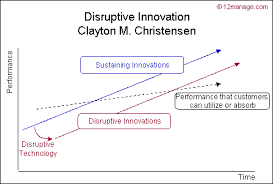The Impact of Disruptive Technology on Society
Disruptive technology refers to innovations that significantly alter the way businesses operate and how people live their lives. These technologies disrupt the status quo, often replacing traditional methods with more efficient and effective solutions. The impact of disruptive technology on society is profound, reshaping industries, economies, and even social norms.
Transformation of Industries
One of the most significant effects of disruptive technology is the transformation of industries. Companies that fail to adapt to these innovations risk becoming obsolete. For example, the rise of e-commerce has disrupted traditional retail businesses, leading to the closure of many brick-and-mortar stores. Similarly, streaming services have revolutionised the entertainment industry, challenging traditional cable TV providers.
Economic Disruption
Disruptive technology can also have a major impact on economies. While these innovations create new opportunities for growth and development, they can also lead to job displacement and economic uncertainty. Automation and artificial intelligence are disrupting industries such as manufacturing and customer service, raising concerns about unemployment and income inequality.
Social Implications
Disruptive technology has social implications as well. The rapid pace of technological change can create challenges for individuals who struggle to keep up with new developments. Additionally, privacy concerns arise as companies collect vast amounts of data through connected devices and digital platforms. Social norms around communication, relationships, and information sharing are constantly evolving in response to disruptive technologies.
The Future of Disruptive Technology
As disruptive technology continues to advance, it is essential for society to adapt and embrace these changes responsibly. Governments must develop policies that support innovation while protecting citizens from potential risks. Businesses need to be agile and proactive in adopting new technologies to stay competitive in a rapidly changing landscape.
In conclusion, disruptive technology has a profound impact on society, transforming industries, economies, and social norms. While these innovations bring about many benefits, they also present challenges that require careful consideration and planning. By understanding the impact of disruptive technology, we can navigate this rapidly changing world more effectively.
Understanding Disruptive Technology: Identification, Case Studies, Developmental Stages, and Key Examples
- How do you identify disruptive technology?
- Is Netflix a disruptive technology?
- What are the 4 stages of disruptive technology?
- What are disruptive technologies examples?
How do you identify disruptive technology?
Identifying disruptive technology involves looking for innovations that have the potential to fundamentally change existing industries or create entirely new markets. One key indicator is the ability of a technology to significantly improve upon current solutions, offering increased efficiency, lower costs, or enhanced capabilities. Disruptive technologies often start small or in niche markets before gaining traction and challenging established players. Keeping an eye on emerging trends, monitoring market dynamics, and being open to unconventional ideas are essential in recognising disruptive technology early on. It is also important to consider the long-term impact and scalability of a technology to determine its disruptive potential in shaping the future landscape of industries and society as a whole.
Is Netflix a disruptive technology?
The question of whether Netflix is a disruptive technology is a topic of debate among experts and industry analysts. Netflix, with its subscription-based streaming service that revolutionised the way people consume entertainment content, has certainly disrupted the traditional television and film industry. By offering a vast library of movies and TV shows on-demand at an affordable price, Netflix has changed viewers’ habits and preferences. Its success has prompted other media companies to launch their own streaming services, leading to a shift away from traditional cable TV. While some argue that Netflix’s impact qualifies it as a disruptive technology, others believe that true disruption involves fundamentally altering an entire industry, which Netflix may not have achieved yet.
What are the 4 stages of disruptive technology?
The four stages of disruptive technology provide a framework for understanding how innovations evolve and impact industries. The first stage involves the emergence of a new technology that initially lacks performance capabilities but offers other advantages such as affordability or convenience. In the second stage, this technology improves rapidly, gaining traction among early adopters and niche markets. The third stage sees the technology reaching mainstream acceptance, challenging established players in the industry. Finally, in the fourth stage, the disruptive technology becomes the new norm, reshaping the industry landscape and forcing incumbents to adapt or risk becoming obsolete. Understanding these stages is crucial for businesses and policymakers to navigate the complex dynamics of disruptive innovation effectively.
What are disruptive technologies examples?
Disruptive technologies are innovations that fundamentally change the way industries operate, often leading to the obsolescence of traditional methods. Examples of disruptive technologies include artificial intelligence (AI), which is revolutionising various sectors by automating tasks and improving decision-making processes. Another example is blockchain technology, known for its secure and transparent record-keeping capabilities, disrupting industries such as finance and supply chain management. Additionally, the Internet of Things (IoT) has transformed how devices communicate and interact, creating new opportunities for efficiency and connectivity across different domains. These examples demonstrate how disruptive technologies can reshape industries and drive innovation in today’s rapidly evolving world.

Leave a Reply